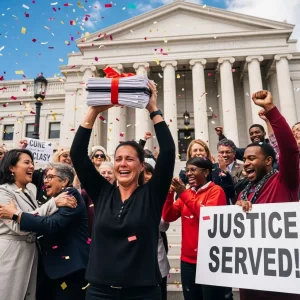Photo: New Hampshire State House in Concord.; via Wikipedia.
For decades, more than 1,500 children and teenagers in New Hampshire’s state-run youth detention centers endured physical, sexual, and psychological abuse, creating one of the worst abuse scandals in the state’s history. After extensive negotiations aimed at avoiding lengthy lawsuits, the state agreed to establish a settlement fund worth hundreds of millions of dollars, with payouts averaging $540,000 per survivor, per coverage today by the New York Times.
Hearings began in 2023, but in June 2024 lawmakers quietly changed the rules. The revisions gave the state more control over the process, including veto power over awards and the ability for the governor to remove the fund administrator. Governor Kelly Ayotte’s new budget excluded the $75 million annual commitment made under her predecessor, and the fund received no allocation. Survivors have since filed a class action challenging the changes, with a hearing scheduled for August 20.
“It’s like the criminal on trial gets to say, ‘I don’t like this, let’s change it,’” said plaintiff Corrine Moon, who has described years of sexual abuse while in state custody. “How is that fair? Why does the state get to keep re-victimizing us?” Moon told the NYT.
The crisis in New Hampshire reflects a broader dilemma facing other states, including California and Maryland, where abuse settlements have ballooned into billions of dollars. Tight budgets have prompted lawmakers to balance survivor compensation with competing priorities, such as public services and tax cuts. This marks a shift from two decades ago, when revelations of widespread abuse in the Roman Catholic Church spurred states to expand access to legal remedies for survivors.
In New Hampshire, abuse at three youth detention facilities spanned decades and included beatings, sexual assaults, choking, strip searches, and solitary confinement. Many survivors came from disadvantaged backgrounds and had been placed in state custody for minor offenses. Allegations date from as early as 1968 to as recently as 2018. Despite earlier warnings in 1978 and 1980 about risks of abuse, the state did not begin a full investigation until around 2020.
Moon said she was raped repeatedly at age 14 by male staff who entered her room at night. She was one of the first survivors to sue the state and later joined the settlement fund seeking a faster, less adversarial resolution.
Similar tensions are playing out elsewhere. Maryland recently cut its cap on abuse settlements by more than half, even as it faces potential liability exceeding $3 billion from juvenile facility abuse claims. In Washington state, legal changes have tripled annual payouts for abuse claims since 2022, forcing lawmakers to overdraw reserve accounts.
California’s 2019 law expanding the right to sue for child sex abuse more than doubled claims against municipalities and school districts. Los Angeles County alone agreed in April to pay $4 billion to settle more than 6,800 cases, with annual payments scheduled through 2051. Some local governments have warned of budget cuts and layoffs, prompting proposals to limit future liabilities. Lorena Gonzalez, who sponsored the 2019 law, said it improved how abuse complaints are handled but acknowledged the financial pressures. “If the payouts are so large that we’re getting rid of, say, child protective services and social workers, then we’re doing a disservice to kids today,” she said.
In New Hampshire, the state argues its restructuring of the fund was driven by concern over mounting legal fees, noting that payments to attorneys representing survivors have totaled more than $72 million, often taken as a third of the award upfront. The former fund administrator, John Broderick Jr., said the attorney general could have required those payments to be spread out but instead politicized a process that had been working.
Survivors and their attorneys reject the state’s narrative. Chuck Miles, who was abused beginning in fifth grade, said, “The money grab is the governor removing funds from the settlement fund.” A plaintiff’s attorney representing 1,500 victims said the state itself set the rules for attorney payments and is now trying to shift blame to discourage survivors from continuing their claims.
Those who joined the settlement fund agreed to waive their right to individual lawsuits, but attorneys now believe those agreements could be reversed. This could expose the state to significant jury verdicts, such as the $38 million awarded last year to David Meehan, a survivor of hundreds of assaults in the 1990s. That award was reduced to $475,000 due to a damages cap currently under review by the State Supreme Court.
Experts say the long-term solution lies in prevention. Marci Hamilton, CEO of Child USA, said states should address root causes to avoid recurring crises. “If they do this right and fix it,” she said, “it’s a short-term emergency, not a permanent budget line.”
If you are a survivor of abuse in state care or another institution, it is never too late to learn your legal rights. Many survivors say the real value goes beyond compensation — it’s about being heard, validated, and empowered to reclaim your life.




